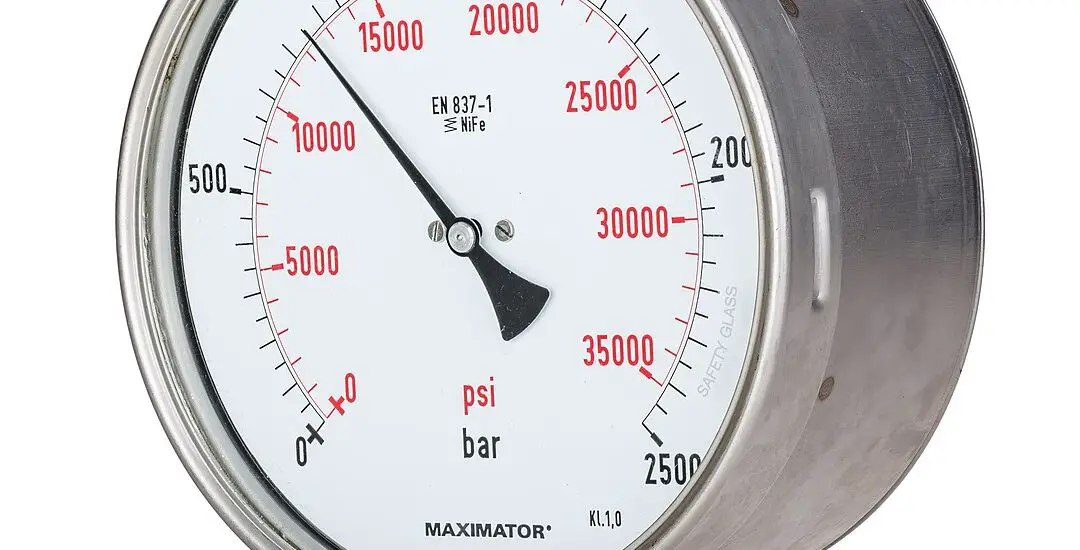If you’re struggling with issues related to your refrigerator compressor gas pressure, this comprehensive guide aims to shed light on the subject. It will take you through the importance, monitoring methods, and adjustment steps for maintaining the ideal gas pressure in your refrigerator compressor.

Table of Contents
Understanding the Basics of Refrigerator Compressor Gas Pressure
The refrigerator compressor acts like the heart of your cooling unit, vital for maintaining a cold interior. It does this by compressing refrigerant gas from a low-pressure state to a high-pressure state, initiating a cooling cycle that circulates cold air inside the fridge.
The type of gas used is usually Freon, a brand of hydrochlorofluorocarbon (HCFC), hydrofluorocarbon (HFC), or other types of refrigerants. Different compressors require specific types of gases, and each has its own optimal pressure levels.
When we talk about ‘gas pressure,’ we refer to the force exerted by the gas per unit area within the compressor. It’s measured in units like pounds per square inch (PSI) or bars. The optimal level of pressure is a range rather than a specific number, and this varies between different fridge models and makes. Your refrigerator’s user manual will usually indicate this range.
Why Optimal Refrigerator Compressor Gas Pressure is Important
Maintaining the right gas pressure in your refrigerator’s compressor is not just important; it’s crucial for several reasons:
Precise Cooling: The correct gas pressure ensures that your fridge maintains the temperature you set. Too low or too high pressure can result in a fridge that’s either not cold enough or frosty.
Energy Efficiency: The compressor uses more energy to compensate for incorrect gas pressure, leading to higher electricity bills.
Longevity of the Appliance: Incorrect pressure levels can put stress on the compressor and other components, potentially leading to premature wear and failure.
Noise Levels: An overworked or struggling compressor often generates more noise.
Safety: Extremely high pressure could be dangerous and may even lead to a compressor explosion in severe cases.
Check out these other articles…
Refrigerator Compressor Duty Cycle: What You Need to Know
Refrigerator Compressor Does Not Turn Off: 4 Causes & Fixes
Refrigerator Compressor Does Not Turn On: Proven Fixes
Refrigerator Compressor Explanation: Comprehensive 411 Guide
Refrigerator Compressor Error: Easy Fixes
How to Check Refrigerator Compressor Gas Pressure
Checking the gas pressure is a sensitive task and should be approached with caution. Here are detailed steps for checking the pressure:
Unplug the Refrigerator: Always prioritize safety by unplugging the appliance.
Locate the Compressor: The compressor is usually at the back of the fridge. Locate the high and low-pressure ports, often marked with “H” and “L” respectively.
Set Up the Manifold Gauges: You will need a manifold gauge set for this task. Connect the blue hose to the low-pressure port and the red hose to the high-pressure port.
Check out this OMT AC Manifold Gauge Set listed on Amazon.
Plug the Refrigerator Back In: After securely attaching the hoses, plug the fridge back in and turn it on.
Read the Gauges: Wait a few minutes for the refrigerator to reach its operating condition. Now read the gauges and jot down the pressure levels.
Consult the Manual: Compare the readings with what your refrigerator’s manual indicates as the optimal pressure range.
Steps to Adjust Gas Pressure
If you find the gas pressure to be outside the optimal range, adjustments are necessary. Due to the technical and potentially hazardous nature of this task, it is highly recommended to consult a qualified technician. However, here’s a general idea of what that process involves:
Diagnostic Tests: The technician will start by conducting a series of tests to identify the reason for the incorrect pressure.
Determine the Corrective Measure: Depending on the tests, the technician will decide whether to recharge the refrigerant or make adjustments to the compressor settings.
Make the Adjustment: Using specialized equipment, the technician will either recharge the refrigerant or make the required adjustments to the compressor.
Re-check the Pressure: After the adjustment, the technician will re-check the pressure to ensure it’s now within the optimal range.